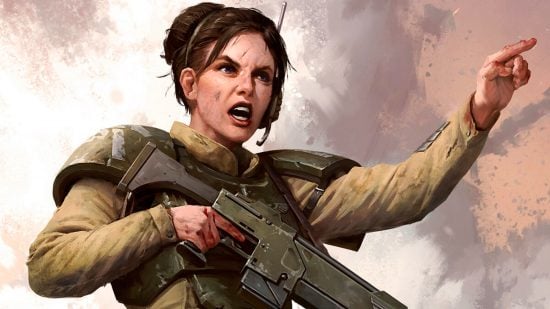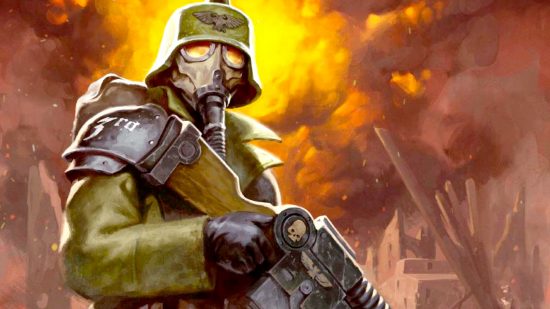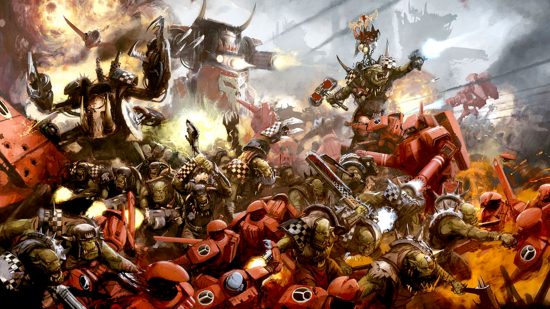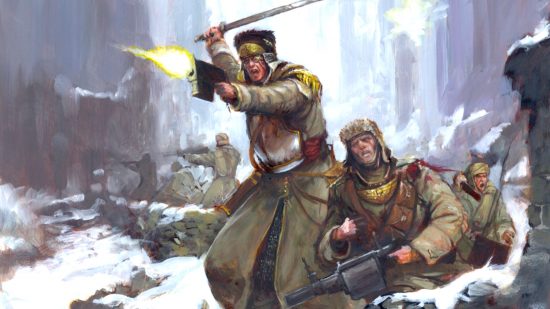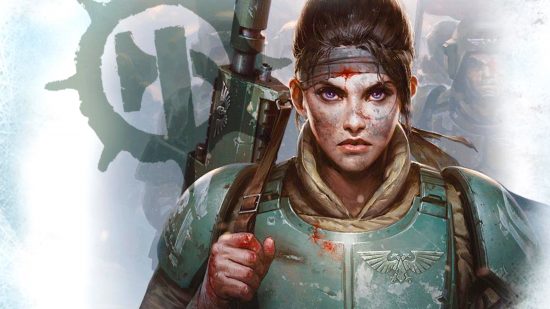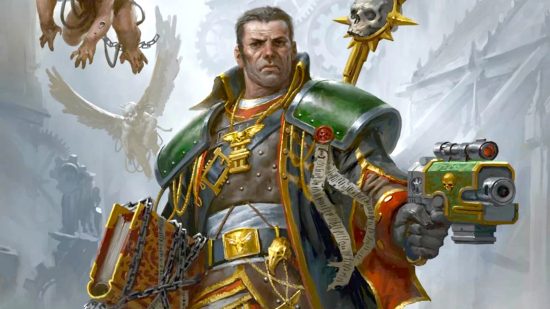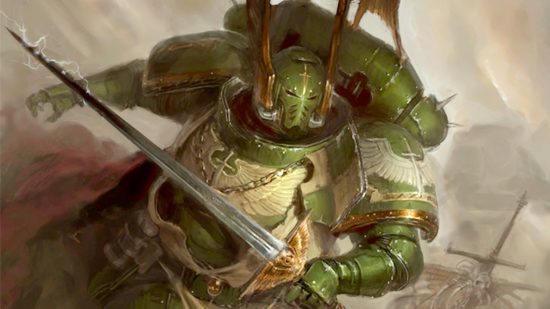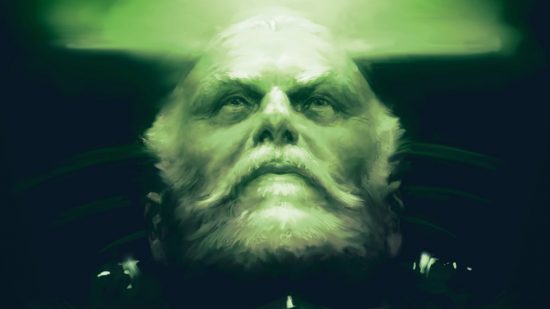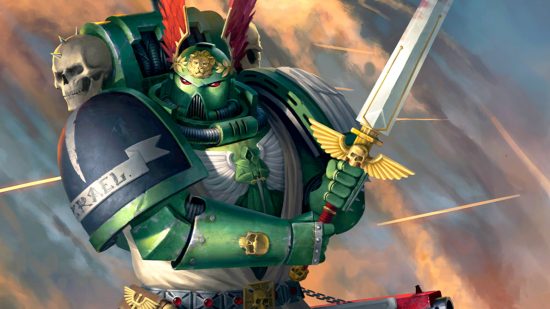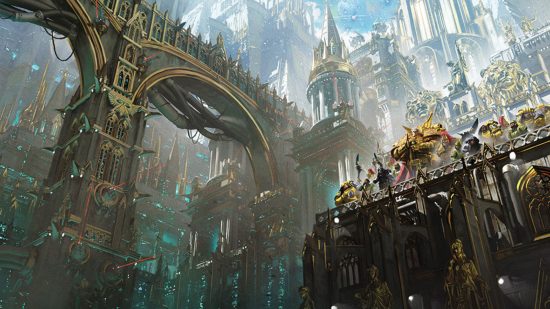Before anybody says it, I am aware that in Warhammer 40k, the almighty Emperor of Mankind would not care what gender or sexual orientation you are, only that you are human, untainted by the chaos 40k forces or xenos races. But if you’re interested to know more about these fine servants of the Emperor who don’t happen to be heteronormative, read on.
When one thinks ‘queer representation’, Warhammer 40,000 is hardly the first tabletop game to come to mind. For one thing, sexuality and gender rarely, if ever, play a major role in the ultra-violent galactic conflicts that typify Games Workshop’s sci-fi miniature wargame setting.
That said, it doesn’t mean they don’t exist. In fact, for such a grim setting, 40k does LGBTQ+ representation surprisingly well by having brilliant characters whose queerness is incidental. From humble Imperial Guard troopers to the most important members of the Inquisition, there are truly great characters for LGBTQ+ fans to relate to in the setting.
Let’s start things off with arguably the most prominent of Warhammer 40k’s LGBTQ+ characters: Inquisitor Wienand. One of the most important characters in Ork-bashing book series The Beast Arises, she was the only person among the High Lords to take the threat of up-and-coming greenskin warboss ‘The Beast’ seriously.
She’s shrewd, capable, and holds a high position of power within the Imperium of Man, as an Inquisitorial representative of the High Lords of Terra. She also has an open romantic relationship with her female bodyguard and acolyte, Rendenstein. Past that, however, Wienand is not defined by her orientation.
Whether she was gay or straight, her relationship would have narratively worked. Making Wienand queer was a conscious choice by the writers of The Beast Arises series to have more diverse representation in the grimdark setting – and to do so as an ordinary, unremarkable detail of human life, rather than with deliberate fanfare.
Moving down humanity’s hierarchy, we find the Imperial Guard, a.k.a. Astra Militarum. It’s noted that the Imperium as an institution likely doesn’t care about petty things like orientation and sexuality. That said, considering how vast the Imperium is, there’s no avoiding the cultural differences that exist within the innumerable ranks of the Guard.
For example, the iconic Valhallan 597th in the Ciaphas Cain novels started life as two mono-gendered regiments of male and female. From this, there was a lot of tension in each regiment around the other’s presumed ability, but the esteemed Ciaphas Cain merged them into one of the galaxy’s most effective regiments.
Among the Valhallan 597th were two female soldiers named Sergeant Grifen and Corporal Mari Magot. While not the main characters, they were a regular fixture of the Valhallan 597th stories. Upon seeing the two show affection, Cain noted how close they were, and was mostly concerned about how romance might distract them in a firefight.
There’s no mention of him thinking the couple was odd. Neither Magot nor Grifen acknowledges their orientation either. They are Imperial Guardswomen, serving the Imperium with as much zeal as any self-respecting Guardswoman would.
There are various other minor instances of sexuality and orientation being seen as a mundane part of life, scattered among the wide range of Warhammer 40k fiction published by Games Workshop’s Black Library label.
At one point during the Eisenhorn and Ravenor novels, there’s a discussion about which agent to send to seduce a target, with both male and female agents being discussed. Clearly, even in cases of infiltration, sexuality is stigma-free, just another operational factor to be aware of.
As well as these in-universe choices showing queerness as an unremarkable and normal characteristic, LGBTQ+ works from the real world have influenced the DNA of some of the most memorable Warhammer 40k factions.
Take, for example, the Dark Angels chapter of Space Marines. Even within the byzantine, religious dogma-ridden Imperium of the 41st millennium, the Dark Angels stand out for their dedication to their own secrecy-shrouded tenets – and for their manic obsession with earning absolution for secret, shameful sins.
Lion El’Jonson is the Primarch of the Dark Angels, and he has a fascinating origin for his name. Lionel Pigot Johnson was a real-life Victorian-era poet, essayist, and critic who was staunchly Catholic.
He was also a very repressed homosexual man, and the paradox of his orientation alongside his religion led him to drink heavily. His religion had led him to cut connections with Oscar Wilde, another famed poet who also happened to be gay.
The real-life Lionel Johnson’s most famous work is also the namesake of The Lion’s founding legion: The Dark Angel. The poem, which I highly recommend you read in full, is a harrowing piece full of self-loathing and despair. Johnson begs for an answer to his impossible situation, knowing there’s nobody he can open up to other than his God.
The parallels with the Dark Angels’ self-imposed secrecy and endless, star-crossed crusade for self-purification are clear as day. The personal pain that these repressed, genetically-modified zealots experience is, at its core, not too different from the guilt that a closeted homosexual man went through in the 1800s.
Obviously, my goal here isn’t to imply the Dark Angels or their gene-father are gay. For one thing, hiding that would be ridiculous in a setting that’s openly accepting of gay people. Instead, it’s to showcase how Warhammer 40k’s grimdark setting uses the pain of all kinds of people in its stories.
For my part, I think Warhammer 40k’s mundane, baked-in acceptance of the LGBTQ+ experience is worth a lot more than the simple tokenism present in other works. Everyone in the Imperium suffers together equally, and that often makes for better queer representation than you might expect from a universe full of space marines and laser cannons.
For more cracking articles on queer issues in tabletop gaming this Pride, check out Amber Willmott’s recent piece on TTRPGS as an LGBTQ+ safe haven, or Jana Townsend-Gee’s tips on exploring queer issues at the tabletop. If you’d rather dive deeper into Warhammer fiction, try our guides to the best Warhammer 40k books, and the ultimate Horus Heresy reading order.
